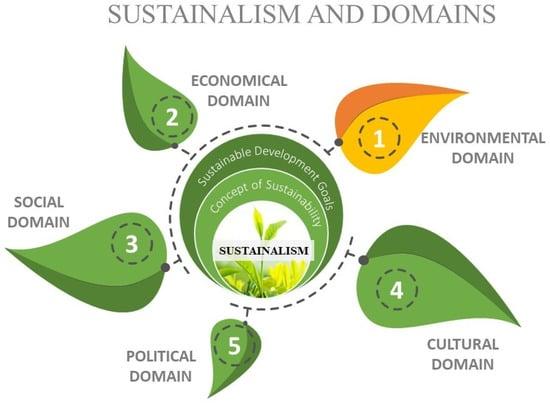In an ever-evolving global economy where opportunities can be as fleeting as a spark, identifying high-growth markets is akin to discovering hidden treasures in a vast landscape.As businesses and entrepreneurs navigate this dynamic terrain, the ability to discern where the next wave of growth lies becomes crucial for sustained success. This article delves into the art and science of spotting high-growth markets, exploring the key indicators and methodologies that can illuminate potential hotspots. From analyzing emerging trends to leveraging data-driven insights, we aim to equip you with the tools necessary to uncover flourishing sectors ripe for investment and innovation. Join us on this journey to uncover the secrets of market identification, and lay the groundwork for yoru next big breakthrough.
Recognizing Emerging Trends through Market Analysis
To effectively navigate the complex landscape of high-growth markets, businesses must leverage meticulous market analysis to discern hidden patterns and emerging trends. By examining various data sources—such as consumer behaviour reports, industry forecasts, and competitive landscape evaluations—organizations can gain valuable insights into where opportunities lie. **Key indicators** to consider include:
- **Consumer Demand**: Identifying shifts in consumer preferences can provide clues about new markets ready to expand.
- **Technological Advancements**: Keeping abreast of innovations can highlight sectors poised for growth.
- **Regulatory changes**: Policy shifts may create or suppress demand in certain industries.
- **socioeconomic Indicators**: Changes in income levels or demographics frequently enough signal emerging consumer bases.
Utilizing tools like SWOT analysis or PESTLE analysis further enhances your understanding of the market dynamics. A streamlined approach, such as constructing a comparative table of potential market sectors and their characteristics, can quickly clarify which spaces are ripe for exploration. Here’s a simple overview:
| Market Sector | Growth Potential | Key Driver |
|---|---|---|
| Health & Wellness | High | Aging population |
| Enduring Energy | Moderate | Environmental policy |
| eCommerce | High | Digital change |
| Remote Work Solutions | High | Cultural shift |
Armed with this information,you can better allocate resources and strategic efforts towards markets that promise the greatest return on investment,ensuring that your association remains competitive and forward-thinking in today’s ever-evolving business ecosystem.

Assessing Consumer Behavior for Growth Opportunities
To effectively identify high-growth markets, businesses must delve deep into consumer behavior patterns that reveal shifting preferences and emerging trends. By leveraging data analytics,companies can unlock insights into demographics,purchasing habits,and engagement levels. Key strategies include:
- Surveys and Feedback: Collecting direct insights from consumers through questionnaires can highlight unmet needs.
- Social Media Listening: Monitoring conversations on platforms like Twitter and Instagram can unveil brand perceptions and potential market gaps.
- Competitive Analysis: Assessing competitors’ performance in various segments can help identify areas of prospect.
Moreover, it’s essential to segment the consumer base to tailor approaches for different groups. Using a framework that categorizes consumers based on their behaviors can provide clarity and focus. For example:
| Consumer Segment | Characteristics | Growth opportunity |
|---|---|---|
| Millennials | Tech-savvy, value experiences | Sustainable products |
| Baby Boomers | Loyal customers, health-conscious | Wellness solutions |
| Gen Z | Influenced by social media, trend-setters | Innovative tech products |

Leveraging Technological Innovations to Spot High-Potential Industries
In today’s fast-paced market, **leveraging technological innovations** is crucial for identifying promising sectors that show signs of substantial growth. Advancements in data analytics and artificial intelligence, such as, allow businesses to process large quantities of market data efficiently. By utilizing these technologies, companies can gain insights into consumer behaviors and preferences, revealing patterns that are difficult to discern through traditional methods. Some essential tools include:
- predictive Analytics: Helps forecast future trends based on ancient data.
- Social Media Monitoring: Analyzes public sentiment towards emerging products and services.
- Market Segmentation: Identifies niche audiences likely to drive demand in specific industries.
Moreover, technologies such as blockchain and the Internet of Things (IoT) enable businesses to explore new operational models and discover previously untapped markets. Utilizing blockchain can enhance transparency and security in transactions, fostering trust in emerging sectors like cryptocurrency and supply chain management.The IoT facilitates data collection from the real world, providing insights into market performance in real-time. A summary of industries ripe for growth can be compiled as follows:
| Industry | Growth Driver |
|---|---|
| Health Tech | Increased focus on telehealth and wearable devices. |
| Green Energy | Shift towards sustainable practices and renewable sources. |
| EdTech | rise in online learning and digital platforms. |

Utilizing Data Analytics for Strategic Market Identification
In today’s data-driven economy, leveraging analytics is essential for identifying high-growth markets. Companies can harness various analytical tools and techniques to uncover valuable insights that guide strategic positioning. **Key metrics** like market size, growth rate, and competitive landscape can be evaluated through datasets sourced from customer trends, economic indicators, and social media sentiment. Analyzing this data enables businesses to pinpoint emerging markets that align with their offerings,ensuring they invest in regions with the greatest potential for profitability.
Additionally, conducting comparative analyses can be beneficial in discerning which markets are saturated versus those ripe for disruption. By evaluating factors such as demographic shifts, regulatory environments, and technological advancements, businesses can create a dynamic portrayal of potential market opportunities. A straightforward summary of these insights can be captured in a table, facilitating quick reference and decision-making:
| Market | Growth Rate (%) | Key Opportunity |
|---|---|---|
| Tech Sector | 25% | AI Integration |
| Healthcare | 15% | Telemedicine |
| Sustainable Products | 18% | Eco-friendly Innovations |
In Retrospect
identifying high-growth markets is not just about following trends, but about harnessing a proactive approach to research, analysis, and innovation. As we have explored, the intersection of data-driven insights, consumer behavior, technological advancements, and economic indicators creates a rich landscape for discerning future opportunities. Armed with the right tools and strategies, businesses can confidently navigate this terrain, positioning themselves at the forefront of emerging sectors. Remember, the key to success lies not only in identifying these markets but also in adapting and evolving alongside them. Embrace the journey of exploration and let curiosity guide your quest for growth in this ever-changing world.

